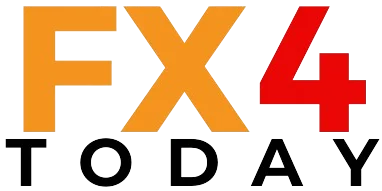EUR/USD Plunges to 1.1700 as Bullish US Data Sends Greenback to 20-Day High
Euro dropped for a second day in a row against the US Dollar, with EUR/USD sliding towards the 1.1700 level as solid US economic data sent the Greenback to a 20-day high. Better-than-anticipated Jobless Claims, GDP, and Durable Goods Orders indicated strong US growth, while Q2 Core PCE inflation crept higher to 2.6%. The positive news supported the Dollar and made it more difficult for near-term Federal Reserve easing expectations, with markets now looking to Friday’s August Core PCE inflation print for new policy signals. KEY LOOKOUTS • The pair is at its weakest since September 11, under pressure from widespread Dollar strength. • Jobless Claims, GDP, and Durable Goods all surpassed estimates, highlighting strong economic momentum. • Q2 Core PCE crept up to 2.6%, maintaining inflation risks in focus. • Friday’s report will influence Federal Reserve policy expectations as well as market sentiment. EUR/USD still under pressure as robust US economic data feeds the Dollar’s strength, driving the pair to the 1.1700 handle. Strong Jobless Claims, above-consensus Q2 GDP, and increasing Durable Goods Orders reflect strong US growth, while Q2 Core PCE inflation of 2.6% reflects ongoing inflationary pressures. Friday’s August Core PCE inflation report will now be in the market’s focus, which can impact the policy direction of the Federal Reserve and decide the timing of any future rate hikes. EUR/USD drops towards 1.1700 as solid US data lifts the Dollar. Strong GDP, Jobless Claims, and Durable Goods point towards strong growth, with markets looking at Friday’s Core PCE inflation for Fed policy signals. • EUR/USD drops to the 1.1700 level, its lowest since September 11. • US Dollar Index (DXY) leaps to a 20-day high at 98.16. • Initial Jobless Claims were 218K, better than forecasted 235K. • Q2 US GDP was upwardly revised to a yearly 3.8%, higher than expectations. • Durable Goods Orders also climbed 2.9% in August, a sign of robust business spending. • Q2 Core PCE inflation rose modestly to 2.6%, a sign of ongoing inflation. • Attention turns to Friday’s release of August Core PCE inflation, important for Fed policy expectations. The Euro has lost ground against the US Dollar for the second day in a row, in response to the influence of positive US economic news. Favorable updates on Jobless Claims, GDP, and Durable Goods Orders point to the strength of the US economy, sending a signal of optimism for the Greenback. This change in sentiment is propelling the Euro to trade around the 1.1700 level, hinting at a cautious bias for the currency pair. EUR/USD DAILY CHART PRICE SOURCE: TradingView Investors are now watching closely for the upcoming economic announcements, specifically the August Core PCE inflation report, which is said to influence the Federal Reserve’s upcoming policy actions. The marriage of steady US growth and chronic inflation worries is influencing market expectations as traders weigh potential pace and magnitude of any monetary policy adjustment. TECHNICAL ANALYSIS EUR/USD is probing important support around the 1.1700 psychological level, which has served as a near-term base in recent trading sessions. The pair remains below its 20-day and 50-day moving averages, reflecting bearish momentum, with the Relative Strength Index (RSI) remaining close to 40, reflecting potential for additional declines if selling pressure endures. Traders will keep a close eye on whether the pair can sustain above this support or a breakdown below could lead the way to the next technical levels at 1.1650. FORECAST EUR/USD can be expected to experience sustained pressure in the short term if the US Dollar continues to hold on to its strength, bolstered by strong economic reports. A dip below the 1.1700 support can drive the pair towards the subsequent levels of 1.1650–1.1600, indicating bearish strength and guarded Euro sentiments. But any hint at decelerating US inflation or softer-than-expected data will be welcome for the Euro, and a possible bounce back to 1.1750–1.1800 can be expected. The upcoming economic releases, especially the August Core PCE report, will closely be monitored by the traders and could lead to short-term volatility and determine the pair’s direction.




